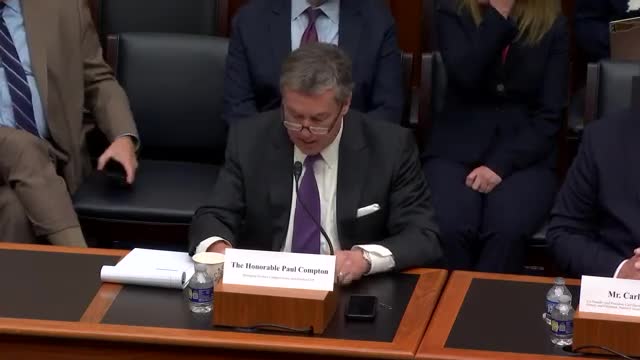Regulatory red tape stifles housing market growth
July 25, 2024 | Financial Services: House Committee, Standing Committees - House & Senate, Congressional Hearings Compilation

This article was created by AI summarizing key points discussed. AI makes mistakes, so for full details and context, please refer to the video of the full meeting. Please report any errors so we can fix them. Report an error »

In a recent government meeting, officials highlighted the significant burden of federal, state, and local regulations on the housing market, likening the situation to the plight of Gulliver in \"Gulliver's Travels.\" The discussion emphasized that the cumulative effect of these regulations stifles market forces and entrepreneurship, ultimately hindering the availability and affordability of housing in the United States.
Key points raised included the three main costs associated with regulatory compliance: direct costs for professionals involved in navigating the regulations, the time value of money affecting development investments, and the increased risks associated with delays in the development process. These delays can lead to higher costs, lost patience from land sellers, and missed opportunities for investors, exacerbating the challenges faced by the housing sector.
The meeting also addressed the dramatic increase in local regulations over the past 40 years, which has coincided with significant changes in tax policy, particularly the 1986 Tax Act. This legislation inadvertently pushed individuals and small businesses out of the real estate market, leading to a reliance on large corporations for housing investments.
To remedy these issues, officials proposed restoring investment incentives for individual investors and closely held businesses, suggesting that such changes could enhance accountability in local regulatory processes. Additional recommendations included revisiting the application of the National Environmental Protection Act to FHA loans and reconsidering certain regulatory decisions that limit housing choices.
The discussion underscored the urgent need for regulatory reform to alleviate the burdens on homebuilders and improve housing production and affordability across the nation.
Key points raised included the three main costs associated with regulatory compliance: direct costs for professionals involved in navigating the regulations, the time value of money affecting development investments, and the increased risks associated with delays in the development process. These delays can lead to higher costs, lost patience from land sellers, and missed opportunities for investors, exacerbating the challenges faced by the housing sector.
The meeting also addressed the dramatic increase in local regulations over the past 40 years, which has coincided with significant changes in tax policy, particularly the 1986 Tax Act. This legislation inadvertently pushed individuals and small businesses out of the real estate market, leading to a reliance on large corporations for housing investments.
To remedy these issues, officials proposed restoring investment incentives for individual investors and closely held businesses, suggesting that such changes could enhance accountability in local regulatory processes. Additional recommendations included revisiting the application of the National Environmental Protection Act to FHA loans and reconsidering certain regulatory decisions that limit housing choices.
The discussion underscored the urgent need for regulatory reform to alleviate the burdens on homebuilders and improve housing production and affordability across the nation.
View full meeting
This article is based on a recent meeting—watch the full video and explore the complete transcript for deeper insights into the discussion.
View full meeting